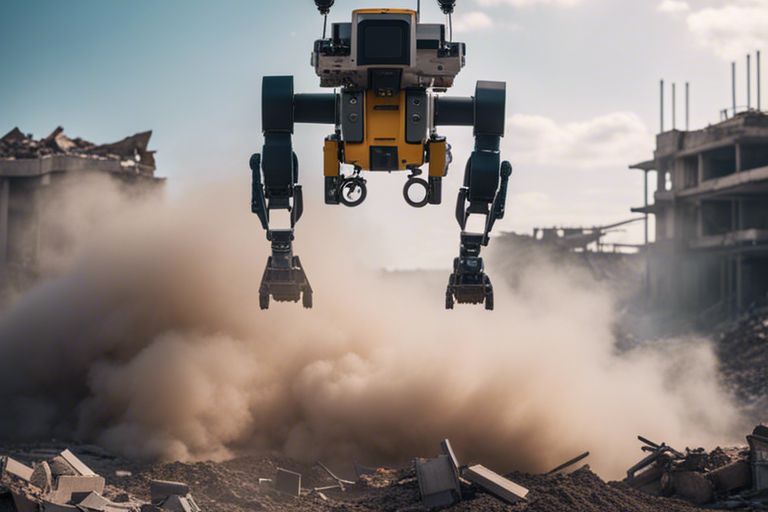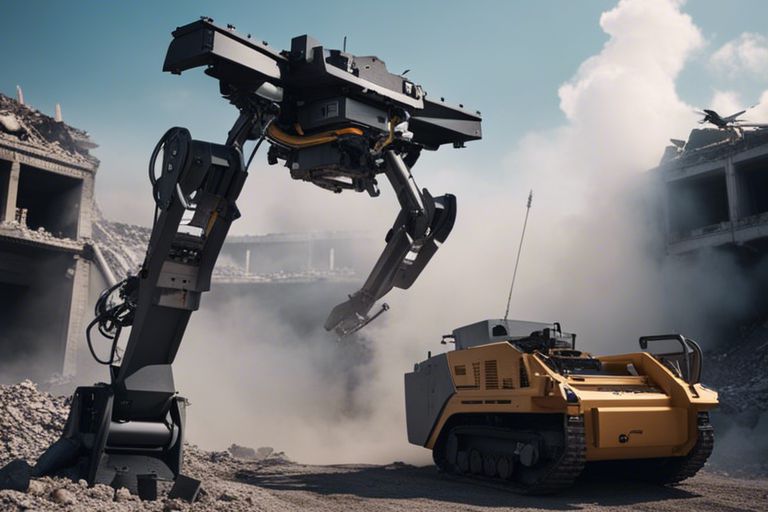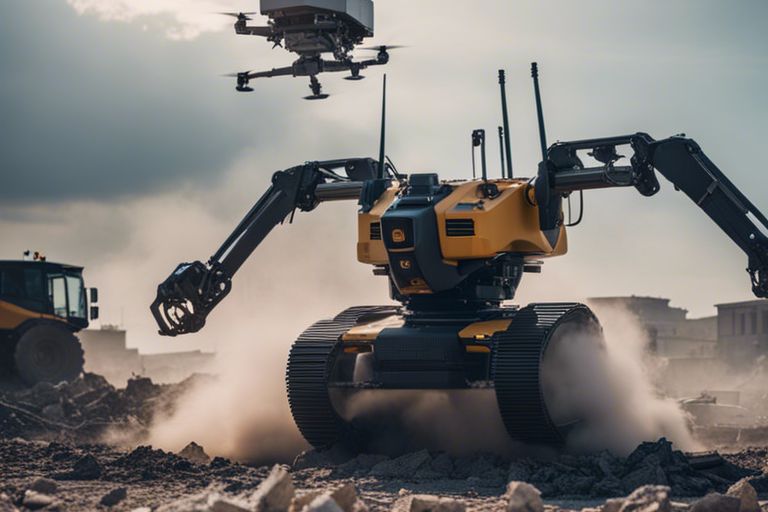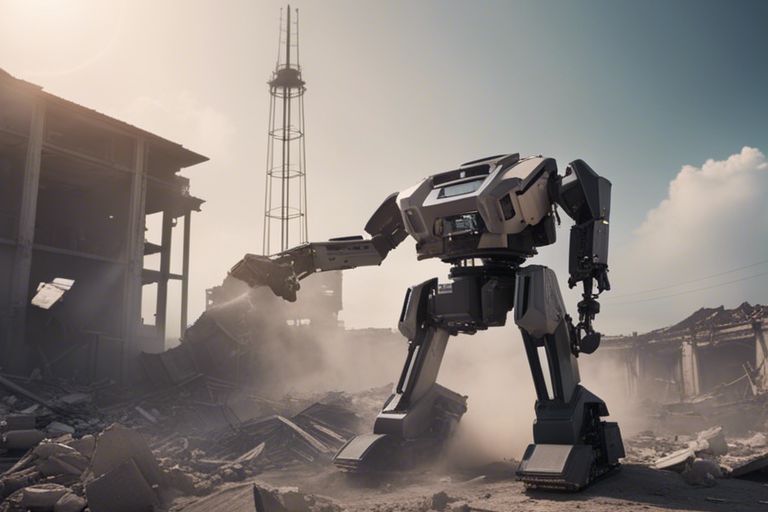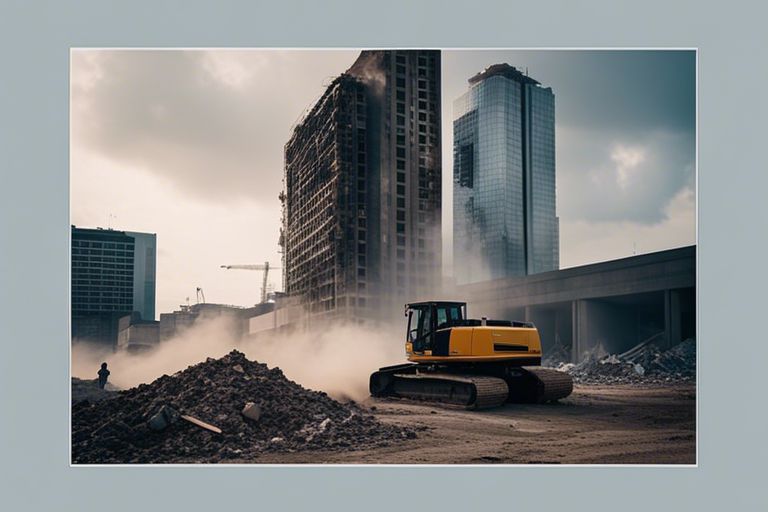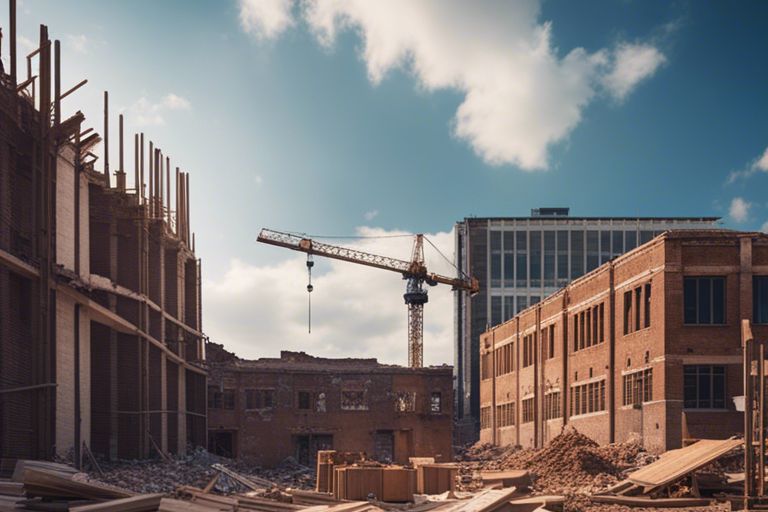In the ever-evolving world of demolition, technological advances have revolutionised the way we approach dismantling structures. Robotics and drones are at the forefront of this transformation, offering safer, more efficient methods for demolition projects. These technologies allow for precision control, making demolition operations safer for workers while also reducing the risks associated with manual demolition. The use of drones provides unique vantage points and helps in accessing hard-to-reach areas, enhancing overall efficiency and accuracy in the process. As we investigate deeper into advanced demolition techniques, it is evident that these innovations are shaping the future of the industry, promising impressive results and improved safety standards.
Key Takeaways:
- Robotics: The use of robotics in demolition allows for more precise and controlled destruction of buildings and structures.
- Drones: Drones play a crucial role in surveying and monitoring demolition sites, enhancing safety and efficiency.
- Technological Advances: Innovations in demolition technology are revolutionising the industry, making processes quicker, safer, and more environmentally friendly.
Evolution of Demolition Technology
History of Demolition Methods
Demolition has been a fundamental part of construction projects since ancient times. Initially, manual methods involving simple tools like hammers, chisels, and pickaxes were used to dismantle structures. As technology progressed, explosives came into play, revolutionising the demolition industry and allowing for quicker and more efficient demolition of large buildings.
Milestones in Demolition Technology
Throughout history, several milestones have shaped the evolution of demolition technology. The invention of the wrecking ball in the 19th century marked a significant advancement, enabling the demolition of structures swiftly. The introduction of hydraulic breakers further enhanced the speed and precision of demolition processes. Moreover, the development of implosion techniques, where structures are strategically collapsed using explosives, has become a popular method for demolishing high-rise buildings in urban areas.
Robotics in Demolition
Types of Demolition Robots
The use of robotics in demolition offers various types of robots designed for different tasks. These demolition robots are equipped with advanced technology to handle tasks such as breaking concrete, cutting steel, and even precision explosives placement. The robots are controlled remotely to ensure safety and accuracy during demolition projects. The robots can be categorised based on their size, operation method, and the type of tools they are equipped with. The robots can navigate through rough terrain and tight spaces, which is difficult for human operators. The versatility and efficiency of these demolition robots make them an invaluable asset in the construction industry.
Advantages of Robotic Demolition
Robotic demolition offers numerous advantages over traditional demolition methods. Robotic demolition reduces the risk to human operators by allowing them to control the demolition process from a safe distance. The precision and control provided by robots also minimise the risk of collateral damage to surrounding structures. Additionally, robots can work continuously without fatigue, increasing overall productivity on the site. The ability of robots to access hard-to-reach areas and handle hazardous materials makes them crucial for projects where safety and efficiency are top priorities.
Drone Applications in Demolition
Surveying and Site Assessment
Regarding demolition projects, drones play a vital role in surveying and assessing the site. These aerial vehicles provide an efficient and accurate way to gather data, such as 3D models and mapping, which helps in planning the demolition process effectively. Drones can access hard-to-reach areas and provide detailed insights without putting human surveyors at risk.
Monitoring and Safety Enhancement
Drone technology has significantly enhanced monitoring and safety measures in demolition sites. Drones equipped with high-resolution cameras can continuously monitor the site for any potential hazards or risks. They can also be used to detect gas leaks, structural weaknesses, or other dangers, keeping both workers and the surrounding environment safe. With real-time data and analysis capabilities, drones have revolutionised safety protocols in the demolition industry.
Innovative Technologies and Techniques
For the latest advancements in demolition, Robots, Drones and New Technology for Facilities Management are revolutionising the industry. From precision robotics that can dismantle structures with surgical precision to drones that provide aerial surveys and inspections, these technologies are changing the way demolitions are carried out.
Cutting-Edge Materials and Tools
Demolition is no longer just about wrecking balls and bulldozers. Today, demolition experts have access to a range of cutting-edge materials and tools that make the process more efficient and precise. From diamond wire saws that can cut through reinforced concrete to high-tech hydraulic breakers that can pulverise structures, these tools are vital for modern demolition projects.
Software and Digital Solutions for Demolition Planning
In the matter of planning a demolition project, Software and Digital Solutions are invaluable. These tools allow engineers and project managers to create detailed 3D models of structures, simulate the demolition process, and identify potential hazards before they occur. By using software to plan every step of the demolition process, teams can ensure a safer, more efficient operation.
In addition to 3D modelling and simulation, these Software and Digital Solutions also enable real-time monitoring of demolition activities, helping teams to react quickly to any unexpected challenges. This level of control and insight is vital in ensuring that demolitions are carried out safely and successfully.
Environmental and Economic Impacts
Reducing Waste and Promoting Recycling
Technological advances in demolition have greatly contributed to reducing waste and promoting recycling in the industry. Robots and drones are now being used to selectively dismantle structures, ensuring that materials are salvaged and reused wherever possible. This not only minimises the amount of waste sent to landfills but also helps to conserve valuable resources. The use of advanced sensors and AI allows for precise sorting of materials, making the recycling process more efficient than ever before.
Cost-Efficiency and Investment in New Technology
The integration of robotics and drones in demolition projects has revolutionised the industry by improving cost-efficiency and encouraging investment in new technology. While the initial investment in these technologies may be significant, the long-term benefits far outweigh the costs. Robotic demolition is faster and safer than traditional methods, leading to reduced labour costs and shorter project durations. The precision of robotic equipment also results in less collateral damage to surrounding structures, further saving on repair expenses.
Moreover, the ability to recycle materials on-site with the help of these technologies can generate additional revenue streams for demolition companies, making them more financially sustainable in the long run. Overall, the advancements in demolition technology have not only improved environmental sustainability but also made economic sense for the industry.
Technological Advances in Demolition – Robotics, Drones, and More
The use of advanced robotics and automation in the demolition industry is revolutionising the way buildings are taken down. From robots that can navigate hazardous environments to drones that provide more precise monitoring and data collection, these technologies are enhancing efficiency, safety, and precision in demolition processes. As explored in Advanced Robotics: Exploring The Collaboration Of …, the collaboration of technology with traditional demolition methods is paving the way for a more sustainable and innovative future in the construction industry. With these advancements, demolition projects can be completed faster, with reduced risk to human workers, and with greater environmental consciousness. Embracing these technologies is vital for staying competitive and ensuring the industry evolves with the demands of modern construction practices.
FAQ
Q: What are some examples of technological advances in demolition?
A: Technological advances in demolition include robotics, drones, explosives, and high-reach excavators.
Q: How do robots assist in the demolition process?
A: Robots are used in demolition to access hard-to-reach areas, handle hazardous materials, and perform precise tasks with efficiency and safety.
Q: What role do drones play in the field of demolition?
A: Drones are utilised for surveying sites, conducting inspections, monitoring progress, and capturing aerial footage for analysis in demolition projects.
Q: How have technological advances improved safety in demolition practices?
A: By using robotics, drones, and other advanced technologies, demolition processes have become safer by reducing the risk of accidents, minimising human exposure to hazardous materials, and enhancing precision in operations.
Q: What are the benefits of implementing technological advancements in demolition projects?
A: The benefits include increased efficiency, cost-effectiveness, precision in demolition operations, enhanced safety measures, and reduced environmental impact through smarter and more controlled demolition methods.

